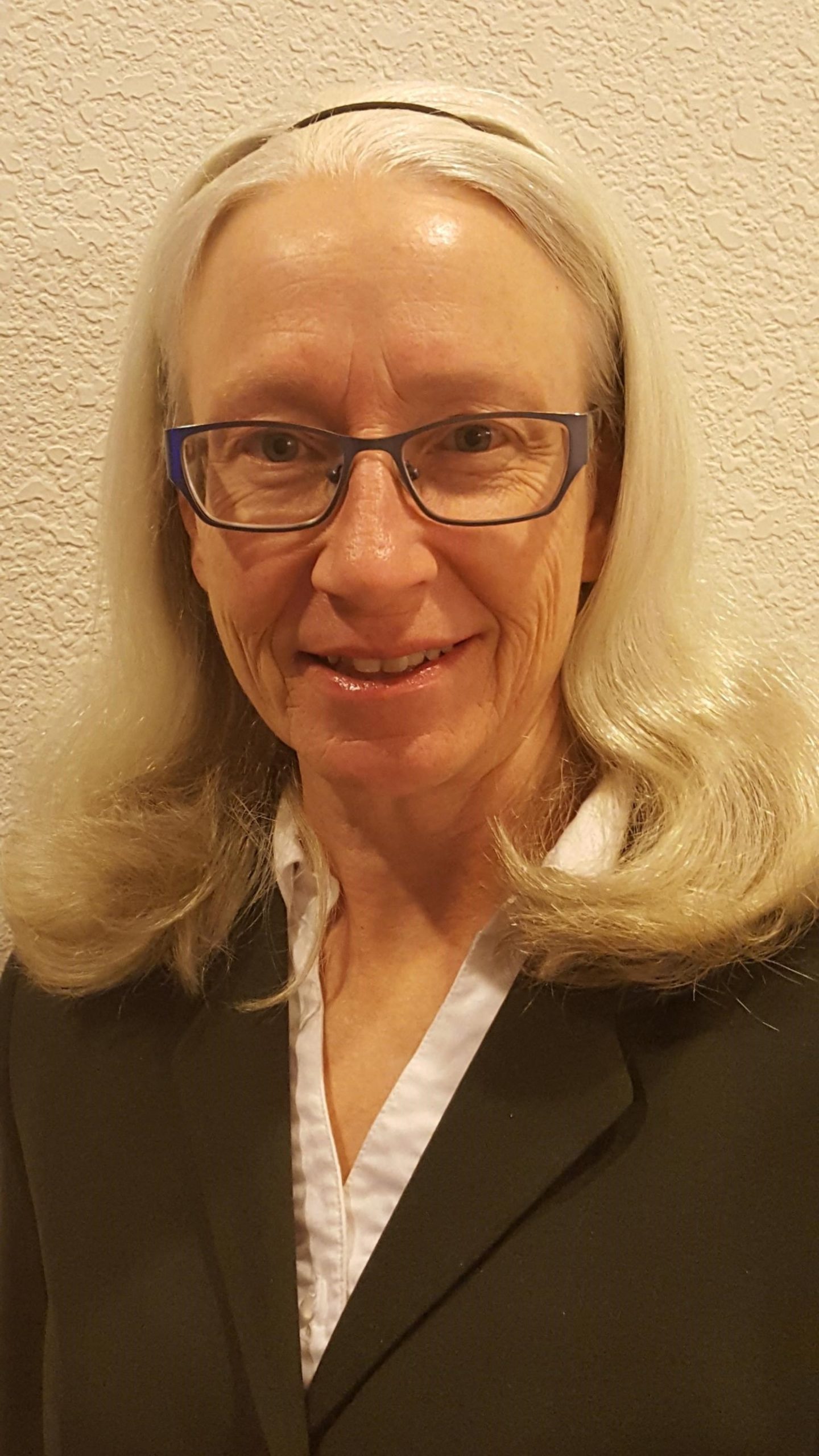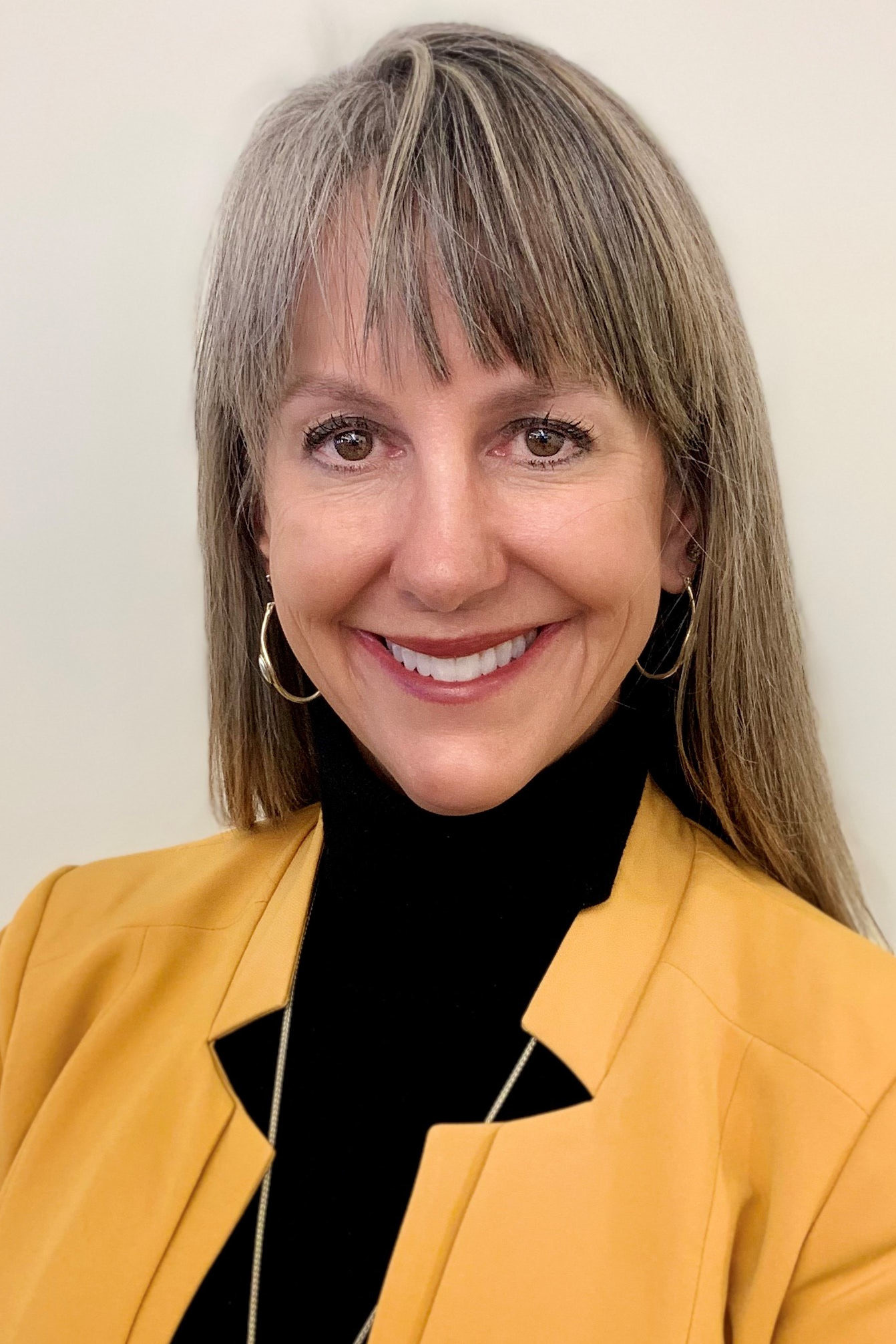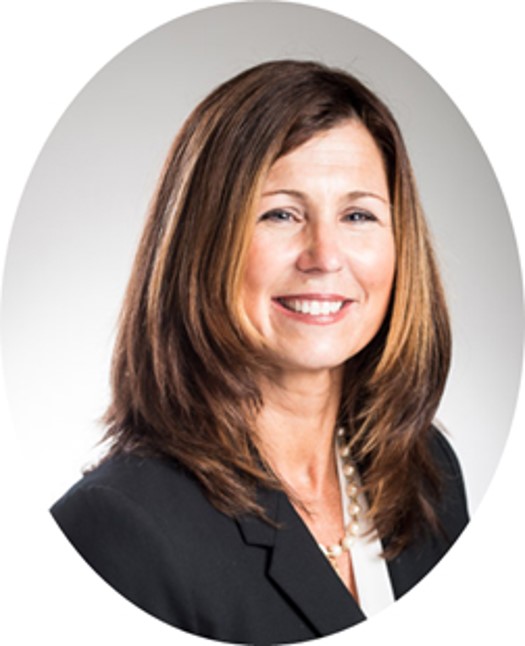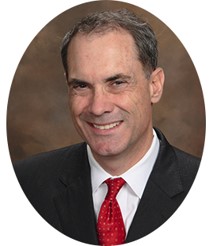Margaret Penado explains how cyber crimes have become the most imminent and costly risks that public entity operations face and why a response team is essential for risk management and will save an organization precious time and efficiency to a cyber event. Going into further detail on who should be invited to serve on an organization's team, best practices, assigning roles and responsibilities to each member, preparing the process to a cyber incident, and creating a checklist that is specific for an organization.
*The views and opinions expressed in the Public Risk Management Association (PRIMA) blogs/podcasts are those of each respective author/speaker. The views and opinions do not necessarily reflect the official policy or position of PRIMA.*

Margaret Penado
Risk Manager, Coconino County, AZ
Summary of Qualifications
Margaret Penado holds a Bachelor’s degree in accounting, and a Master’s degree in administration with emphasis on public entities, and has over 25 years of insurance experience. She began her career with Travelers as a Commercial Lines Underwriter and contributed for many years to the award winning success of the Salt Lake City field office. Following this, Margaret worked for the Workers’ Compensation Fund of Utah as a large account underwriter, policy strategist, policy language developer, and IT liaison. After moving to Arizona, Margaret joined the State Compensation Fund of Arizona where she worked in varying roles as an insurance premium auditor, loss control representative, and the Flagstaff field office manager before segueing to work directly for local government. She served as the risk manager for City of Flagstaff in 2012-2013, and has served as risk manager for Coconino County from 2013 to present.
Responsibilities
Risk Manager for Coconino County with oversight of insurance coverages, claims, risk management, safety, loss control workers' compensation, insurance and indemnification contract language, employee benefits, Americans with Disabilities Act, and Family Medical Leave Act.
Business Experience
Margaret has over 25 years of insurance experience. She began her career with Travelers as a Commercial Lines Underwriter and contributed for many years to the award winning success of the Salt Lake City field office. Following this, Margaret worked for the Workers’ Compensation Fund of Utah as a large account underwriter, policy strategist, policy language developer, and IT liaison. After moving to Arizona, Margaret joined the State Compensation Fund of Arizona where she worked in varying roles as an insurance premium auditor, loss control representative, and the Flagstaff field office manager before segueing to work directly for local government. She served as the risk manager for City of Flagstaff in 2012-2013, and has served as risk manager for Coconino County from 2013 to present.
Professional Affiliations
Associate in Risk Management for Public Entities from Insurance Institute of America (IIA)
Associate in Premium Auditing from IIA
Certified Property Casualty Underwriter
Member of American Society of Safety Professionals (ASSP)
Member of PRIMA
Education
Bachelor of Arts Degree in Accounting from University of Utah (Valedictorian)
Master of Administration with emphasis on Public Entities from Northern Arizona University (with distinction)
Workers' compensation networks did not exist in Texas, prior to 2005. Catherine shares how their healthcare network was approved in 2006, activated in 2009 and how they’ve significantly decreased medical cost averages as well as days of work lost.
Organically growing your network has proven to be significantly beneficial. Having productive relationships with providers is key; they’re able to manage care from the beginning of a case to the end of the case with collaborative efforts of utilization review, medical bill review, ancillary peer review, and field and telephonic case management.
*The views and opinions expressed in the Public Risk Management Association (PRIMA) blogs/podcasts are those of each respective author/speaker. The views and opinions do not necessarily reflect the official policy or position of PRIMA.*

Catherine Benavidez
President, Injury Management Organization, Inc.
Responsibilities
Catherine is responsible for the operation and development of innovative services that lead to serving the client and providing quality managed care services. IMO has its organically developed Health Care Network (HCN/1305) called the IMO Med-Select Network. IMO is a Utilization Review Agent and can do pre-authorization for all lines. IMO provides all case management services including field and telephonic and a 24 hour coverage called the "E-Intelemed", an Early Intervention Case Management Triage.
Professional Affiliations
National and State PRIMA, RIMS, Local Claims Associations, Case Management and also the TEXANS- for nonsubscribers in the State of Texas. Past Board of the Texas Occupational Therapy Association and Current Board of the Goodwill Industries.
Education
Catherine is a Licensed Occupational Therapist and Certified Case Manager.
Cherri Lindquist and Paula Allen describe the unique experience of school personnel and how the repercussions of the pandemic have impacted their professional and personal lives. School personnel face a multi-faceted situation - each department faces a different experience in keeping students and colleagues safe while upholding new protocols.
Cherri and Paula explain the many reasons why employee assistant programs are invaluable for school personnel, how to implement them successfully and how to utilize effective support for school personnel during the crisis of COVID-19.
*The views and opinions expressed in the Public Risk Management Association (PRIMA) blogs/podcasts are those of each respective author/speaker. The views and opinions do not necessarily reflect the official policy or position of PRIMA.*

Cherri Lindquist, BSN, RM, CCM
Clinical Nurse Manager, Company Nurse
Summary of Qualifications
Cherri holds over 20 years experience working in healthcare in a variety of specialties including family practice, internal medicine, dermatology, endocrinology, home health and occupational health.
Responsibilities
Cherri manages Company Nurse's 24/7 contact center focusing on workplace injuries. Duties include development of new triage algorithms and modifications of current ones as evidenced best practice changes, providing education to registered nurses on processes, identifying client needs to improve triage outcomes including appropriate education that can be given on-site prior to calling into contact center, managing all aspects of staffing nursing department including hiring, payroll, etc; and providing clinical guidance for internal COVID-19 operating procedures.
Business Experience
Company Nurse- Clinical Nurse Manager (Feb 2019-Present)
Honor Health- Clinical Case Manager Home Health (2014-2019)
Honor Health- Lead Medical Assistant/Supervisor NOAH Clinics (2009-2014)
Education
Grand Canyon University, Bachelor of Science in Nursing

Paula Allen
Global Leader, Research and Total Wellbeing and a Senior Vice- President, Morneau Shepell
Summary of Qualifications
Paula is the global leader, research and total wellbeing and a senior vice- president at Morneau Shepell. In this role, she manages the research agenda for Morneau Shepell, which includes primary research conducted by Morneau Shepell, exploratory data science, research collaborations and meta-analyses. Given her focus on industry leading research, Paula also leads Morneau Shepell’s thought leadership and is co-chair of the organization’s product and innovation strategy.
She has more than 20 years of experience relating to workplace research, product development and operational leadership that spans the range of EFAP, workplace learning, attendance and disability management, and health and benefits consulting.
Paula is a sought-after speaker by organizations, national media and at conferences for her knowledge and expertise in current issues and the future direction of health, wellbeing, productivity and related risk management.
Responsibilities
Paula is focused on the current and emerging issues that impact health and productivity and related costs. Her scope includes all areas of wellbeing – social, physical, financial and mental. She is also a well-recognized expert in all areas of workplace mental health, learning strategies, disability management and drug plan management. She designed and led the most comprehensive employer response to the H1N1 pandemic and is currently Morneau Shepell’s business response and resource lead for the COVID-19 pandemic. She also works directly with many of Canada’s leading organizations.
Professional Affiliations
Paula is a member of the Women’s College Hospital’s Board of Directors, a member of the Virtual Learning Advisory Board consulting to the public sector’s post-secondary on-line learning strategy, a member of the International Women’s Forum, was co-chair of Civic Action’s Champions Council on workplace mental health, was part of the Income Security Working Group providing advice to the Ontario Government on issues relating to disability and income support, and sits on several research and strategy advisory boards that address issues ranging from e-mental health solutions to substance abuse in the workplace.
Education
Paula completed undergraduate and graduate degrees at the University of Toronto in psychological research and neuropsychological testing and clinical intervention.
There are numerous medical and technological advancements that will hold significant promise in the next 10 to 15 years. Significant benefits and improvements are already being observed within workers' compensation and risk management, such as reduced litigation costs and identifying employers that need additional education or movement feedback to minimize injury. However, along with positive advancements, there are also sizable questions and problems such as misuse of technology, the boundaries of ethics and the use of data collection and privacy.
Some topics up for discussion in this week's podcast are:
- Artificial intelligence
- CRISPR; a new technology for splicing genes
- Autonomous vehicles
- Medical technology
- New software and applications
*The views and opinions expressed in the Public Risk Management Association (PRIMA) blogs/podcasts are those of each respective author/speaker. The views and opinions do not necessarily reflect the official policy or position of PRIMA.*

William Zachry
Senior Fellow, Sedgwick
William was appointed a senior fellow of the Sedgwick Institute in 2017 and is known throughout the risk management industry as a champion of workers’ compensation reform. He serves on the board of the State Compensation Insurance Fund, California’s largest provider of workers’ compensation insurance. William was appointed to the board by Gov. Arnold Schwarzenegger in 2010 and reappointed by Gov. Jerry Brown in 2014. He also participated in the design and implementation of landmark regulations to bring greater equity to the California workers’ compensation system.
Previously, William served as group vice president of risk management for national grocery retailer Safeway/Albertsons. His 15 years of leadership there earned him recognition as Business Insurance’s Risk Manager of the Year in 2014 and recipient of the California Coalition on Workers’ Compensation’s Tim East Award in 2016.
Amidst COVID-19, school districts have become a central location of information for the community. This discussion will include the initial challenges of the pandemic; such as online transitional learning, supply chain strain, community partnerships and pressure. Also discussed is the shift of priorities after handling the initial obstacles that resulted from the pandemic as well as communication, preparation and the role that school districts play within the community.
*The views and opinions expressed in the Public Risk Management Association (PRIMA) blogs/podcasts are those of each respective author/speaker. The views and opinions do not necessarily reflect the official policy or position of PRIMA.*

Kaylee Sorensen
Emergency Management Consultant, Ashton Tiffany
Kaylee has worked for the Arizona School Risk Retention Trust (Trust) for seven years. She earned her master of arts in emergency management and homeland security from Arizona State University and oversees the Trust Emergency Management Program.
Kaylee conducts trainings, assists districts with planning, and facilitates regional school safety consortiums around the state. She also serves on the Arizona Department of Education's Emergency Preparedness Advisory Council, and as secretary of the International Association of Emergency Manager's Children in Disaster Caucus.
This week's speakers, Karen Caterino and Mark Pew, explain how to navigate the professional generation gap.
Karen and Mark share the cause for the talent gap, and the risks and information loss as a product of baby boomers’ retirement. They also provide several effective solutions through mentoring and The Transitions Movement. They share many benefits of being a mentor and/or mentee and how to create a successful relationship that garners professional and personal growth.
*The views and opinions expressed in the Public Risk Management Association (PRIMA) blogs/podcasts are those of each respective author/speaker. The views and opinions do not necessarily reflect the official policy or position of PRIMA.*

Karen Caterino
Public Entity/Education Center of Excellence Leader-West, Willis Towers Watson
Summary of Qualifications
Karen has over 20 years of experience in risk and insurance. She has had a track record of success in the healthcare and managed care fields and now as an insurance consultant for Willis Towers Watson leading their Public Entity/Education Center of Excellence in the west. Her background includes serving as a public entity risk manager followed by leading complex sales and account management initiatives in workers' compensation. Karen serves as a member of The Transitions Advisory Council, “a movement to help the workers’ compensation industry, collectively and individually, think strategically about how to handle the influx and outflow of talent over the coming decade.”
Responsibilities
Karen leads new public entity and education business growth and development initiatives for the region. She ensures clients have access to expertise and thought leadership on issues that are of importance and brings forth unique, alternative risk financing solutions for clients interested in non-traditional placement services. Her background in risk and insurance management, consultative sales leadership, innovative award-winning program development and account team management are helping Willis Towers Watson to build deeper client relationships while delivering excellence to the client experience.
Business Experience
Karen’s previous experience includes serving as the State of Nevada risk manager and municipality risk manager from 2009-2012, as well as City of Sparks senior benefits/risk analyst, 2004-2009. She received the 2011 PRIMA Achievement Award for "Workforce Pandemic Flu Preparedness" and 2007 2nd place for "Public Safety Cardiac Wellness Program." She was a 2011 Teddy Award finalist for her innovative program approach to managing injured workers care and return to work, and received the 2010 Workers Compensation Most Notable People Award, LexisNexis(R) Workers' Compensation Law Community.
Prior to joining Willis Towers Watson, Karen was the vice president of client services for Mitchell ScriptAdvisor, a workers’ compensation PBM, where she managed a team of client service managers representing 140+ national clients.
Professional Affiliations
Arizona PRIMA, Oregon PRIMA, National PRIMA, Nevada RIMS and STRIMA
Education
Karen graduated with her bachelor’s degree in sociology from Roanoke College, Salem, VA and from University of Phoenix with her MBA, including honors. Karen has an Associate in Risk Management-Public Entities and is a Certified Public Manager and Certified Government Benefits Administrator and is currently a CPCU candidate.

Mark Pew
Senior VP, Product Development & Marketing, Preferred Medical
Summary of Qualifications
Mark is a passionate educator and agitator. Mark is a recognized thought leader in workers’ compensation and award-winning international speaker, blogger, author and jurisdictional advisor. Also known as the RxProfessor, he is focused on the intersection of chronic pain and appropriate treatment. In December 2020, he co-founded The Transitions, “a movement to help the workers’ compensation industry, collectively and individually, think strategically about how to handle the influx and outflow of talent over the coming decade.”
Responsibilities
Mark's goal is to raise awareness for how to find the most clinically appropriate treatment for injured workers with minimal risk and maximum benefits by speaking, writing and vlogging. He creates/advocates for products and services that meet that criteria. Mark oversees the efforts of The Transitions to help people and organizations create a plan for the ongoing generational shift. He also connects mentees to mentors to foster professional and personal growth.
Business Experience
Mark started in information technology in 1980, transitioned to utilization management in workers' compensation in 2000, focused on addressing the over-prescribing of painkillers since 2003, advocated for a biopsychosocial treatment model since 2012 and has been an industry expert on the evolution of medical cannabis since 2014. Mark is a frequent industry media source. He received the WorkCompCentral Magna Comp Laude award in 2016 and the IAIABC’s Samuel Gompers Award in 2017. Since 2013, he has served on the IAIABC’s Medical Issues Committee. Mark is an advisor to regulators and legislators in 20+ U.S. jurisdictions on subjects such as drug formularies, treatment guidelines, opioid task force initiatives, encouraging support of non-pharma treatment options and the medicinal use of cannabis. He was appointed to Advisory Board for SimpleTherapy in July 2019 and to the Advisory Board for Harvard MedTech in October 2019.
Education
Mark attended Georgia State University and Atlanta Christian College as a business major.
James shares how to make greater progress as a society and individually for diversity, equity and inclusion in the workplace. Witnessing firsthand the lack of diversity on some panels, for instance, he illustrates that it is important for company leaders and disenfranchised individuals to have honest discussions that tackle solutions that may be uncomfortable in the onset.
Addressing minority advancement within the workplace, specifically in the insurance industry, James shares that the two key components are networking and opportunity. In order to advance, minority groups need to be in a position to network in order to build key relationships and be considered for opportunities, and that opportunities can be made readily available by attending professional gatherings such as conferences.
He also shares the foundational policies to be implemented in the workplace, and elaborates on what needs to happen to create lasting change.
*The views and opinions expressed in the Public Risk Management Association (PRIMA) blogs/podcasts are those of each respective author/speaker. The views and opinions do not necessarily reflect the official policy or position of PRIMA.*

James Curbeam, CPCU, ARM, AIC
Director of Risk Management, Las Vegas Valley Water District
Summary of Qualifications
James Curbeam, is the risk manager for the Las Vegas Valley Water District. He holds a B.S. in finance from Creighton University and an executive MBA from the University of Nebraska Omaha. James has served in the following industry leadership roles: president, Nevada Chapter of RIMS; president, Nebraska Chapter of RIMS; and president of the Las Vegas CPCU Society. He also was named a 2018 Risk & Insurance All-Star and the 2019 PRIMA Risk Manager of the Year.
For this week’s episode, Lisa Orr provides a wide range of solutions for working from home. She explains specific tactics in achieving efficiency within this new normal, such as:
- Dedicating a specific space
- What to do with limited space and funds
- Minimizing distractions
- Developing routines
- The ideal ergonomic setup
- How to coordinate with children and their schedule
- Supporting from a managerial role
Lisa brings to light some of the office tendencies that have been lost and what aspects are valuable to incorporate into your schedule.

Lisa Orr
Senior Human Factors Consultant, Sedgwick
Summary of Qualifications
Lisa is a board certified professional ergonomist and a senior human factors consultant with Sedgwick Claims Management Services, Inc.
Responsibilities
Lisa's responsibilities are to develop, implement and evaluate human factors/ergonomic program strategies for clients; to develop and deliver educational programs and materials; to serve as liaison to internal and external groups for human factors/ergonomics issues and opportunities; and to provide guidance in human factors/ergonomics issues and development.
Business Experience
Lisa has 26 years of experience providing ergonomics consulting and human factors design and research services for a variety of industries such as manufacturing, healthcare, apparel, newspaper/publishing, banking/finance, retail, transportation and public entities. Consulting with local, regional and national employers, she assists them in developing, implementing, and evaluating loss prevention program strategies. She specializes in the assessment of overall work processes, compliance, training, onsite evaluations and analytics.
Professional Affiliations
Member - Human Factors and Ergonomics Society (HFES) & International
Ergonomics Association (IEA)
Board of Certification in Professional Ergonomics (BCPE)
Education
M.S., Industrial Engineering, with a specialization in human factors, University of
Nebraska, Lincoln
B.S., Industrial Engineering, University of Houston, University Park
This week we’re joined by Mark Morgan, President of Sherrill Morgan. He explains pharmacy costs, which includes why pharmaceuticals are priced the way they are and how pharmacy programs work today. He further elaborates on the space between the average wholesale price (AWP) and the maximum allowable cost. This gap allows for arbitrary costs to be determined by a pharmacy benefit manager (PBM). Mark shares how to address or avert the PBM situation. He also provides insight into multiple ways to save when purchasing pharmaceuticals.

Mark Morgan
President, Sherill Morgan
Summary of Qualifications
As the founder of Sherrill Morgan’s group health division, Mark has paved the way in developing a systematic approach to healthcare benefits for governmental clients. Understanding that an innovative approach is necessary to stay ahead in the healthcare industry, Mark has helped Sherrill Morgan to develop its self-funding division which allows employers (especially government agencies) to have a measure of control over their healthcare costs.
Responsibilities
Mark's responsibilities include developing and implementing innovative strategies to assist self-funded employers in reducing healthcare costs. Currently, these innovative strategies include multi-employer pools to manage risk, new pharmacy programs to mitigate costs, and alternative contracting arrangements to benefit the employer and employees.
Business Experience
Mark has been with Sherrill Morgan for over 30 years and has witnessed and adapted to the changing nature of the healthcare industry. During his time at Sherrill Morgan, he has helped the business grow from an insurance agency focused primarily on life insurance into an employee benefits firm offering consulting services on health and ancillary products. He has also developed and is the Chief Executive Officer of Employer Advisory Services (EAS), a subsidiary of Sherrill Morgan. EAS assists hospitals, third party administrators, and other health plan providers by using cutting edge best practice services including Transparent Pricing Arrangements, Specialty Drug Acquisition, and OwnRx®.
Education
Mount Vernon Nazarene University
On this week's podcast, Will and Kristin will share the six main factors that contribute to social inflation. They will also expand on the impact of public distrust, negative public sentiment and the generational influence of Millennial jurors. Some of the topics that that will be discussed are:
- The areas of public entity practice that pose the greatest risk
- The best tactics in mitigating an inflamed jury
- How to be proactive in taking risk control measures
As a public risk practitioner, the best means of protection is creating and reinforcing a culture of safety, locating the cause of an issue, sharing data from claims and providing hands on training in order to curb the social inflation impact.

Kristin Smolek
Vice President, Pooling, Sedgwick
Summary of Qualifications
Kristin is a licensed attorney who began her career in the private sector, handling civil matters. She then joined the Litigation Management team at York Risk (subsequently acquired by Sedgwick), where she managed complex liability claims involving all lines of casualty coverage for 15 years. Kristin now oversees the management of the Litigation, Risk Control, Underwriting and Marketing teams for the Sedgwick Michigan Pooling office.
Business Experience
Kristin worked for the law firm of Garan, Lucow and Miller, P.C., handling civil litigation matters, prior to joining York Risk which was subsequently acquired by Sedgwick. Kristin has been with the Sedgwick organization for over 19 years, beginning her career with the Litigation Management team. She began managing complex litigation matters involving general liability, police professional, employment, public official and zoning cases for six municipal risk pools in the midwest including Ohio, Illinois, Iowa and Pennsylvania. During her 15-year tenure with the Pooling Litigation Management team, Kristin worked directly managing the claims of the local claims offices, and overseeing defense counsel throughout the litigation process.
Professional Affiliations
State Bar of Michigan, Oakland County Bar Association
Education
Kristin graduated in 1992 from Albion College, earning her Bachelor of Arts. She earned her law degree from the University of Detroit Mercy School of Law in May 1995, and subsequently passed the Michigan bar.

Will Portello
Director, Litigation Claims, Sedgwick
Summary of Qualifications
Will graduated from the University of California, Davis in 1989. He received his law degree from the University of Oregon School of Law in 1993. He subsequently passed the bar in both California and Oregon. After several years with the Sacramento-based insurance defense law firm of Thompson, Meade, & Nielsen, in 1997 he joined a San Francisco Bay Area firm, Guichard, Teng & Portello, where he practiced until joining Sedgwick in 2017. As the director-litigated claims, Will provides oversight and management of the defense of litigated cases on behalf of seven self-insured joint powers authorities throughout California, including transit districts, special districts, and municipalities, overseeing defense counsel and third-party administrators.
Professional Affiliations
State Bar of California, Certified Litigation Management Professional












